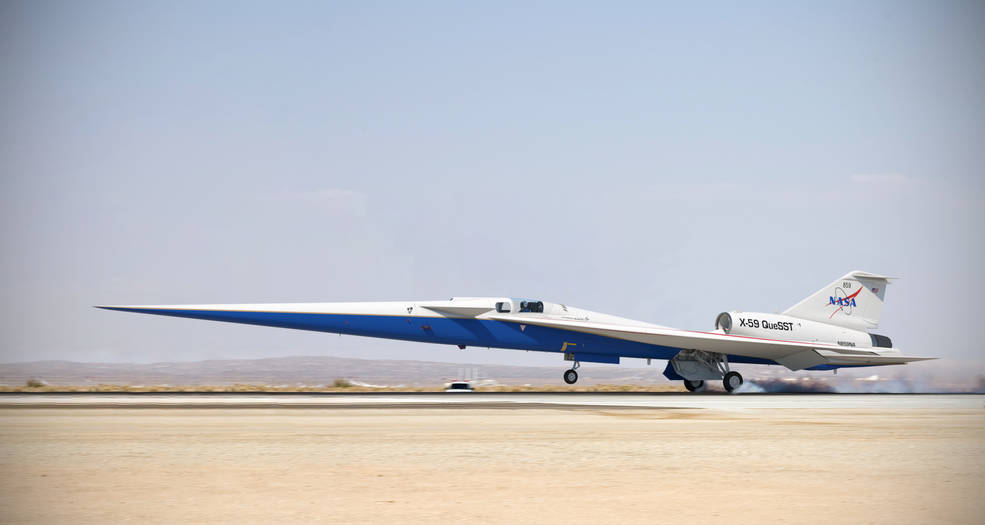
The U.S. gives X to the names of aircraft and spacecraft developed for the purpose of high-tech experiments. Currently, the low-noise supersonic airplane designed and developed by NASA and Lockheed Martin has been given the name X-59. NASA announced on December 17 (local time) that final assembly will begin.
The X-59 is a supersonic airplane called QueSST (Quiet SuperSonic Technology). Supersonic airplanes originally emit a loud explosion-like roaring sound, that is, shock waves, but support the function of suppressing the generation of such shock waves.
The X-59 has a shape that has a sharper edge than that of conventional aircraft, making it difficult for the impact through the air to pass through. Thanks to this, it is said that the noise transmitted to the ground when flying at an altitude of 17,000m at 1,500km/h is only the sound of closing a car door.
The assembly of the X-59 takes place at Lockheed Martin’s development division, Skunkworks, in Palmdale, California. The fuselage, wings, and tail wings of the plane are already prepared in the assembly area, and the final work to raise them to one aircraft is planned to be carried out in the second half of 2020. When the aircraft is complete, the X-59 conducts a test flight at supersonic speed in a restricted area, similar to the test flight held in Texas using the F/A-18 Hornet as an example of the X-59 study. As early as 2021, it is intended to collect flight feedback.
Such data will be used for data related to making rules for this, as the purpose of this airplane development is to operate a supersonic commercial airliner. Related information can be found here .


















Add comment